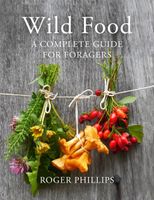Label
All
0
Clear all filters
🔥 Celebrate new books on our BBQ & Grilling shelf with 25% off ckbk membership 🔥
Beech
Appears in
Published 1986
Fagus sylvatica L. The beech is a native deciduous tree of south-east England, found especially on chalk, but elsewhere it is planted and often naturalized.
Beech bark was thought to be deadly to snakes while beech tea, made with lard, was a sure remedy for rheumatism. In Norway and Sweden the sawdust of beechwood used to be boiled in water, baked, and then mixed with flour to form bread.
Beech trees do not produce good mast (the encased nuts) every year but in favourable conditions an abundant mast may be produced every five to eight years. In times of famine the nuts have been eaten, and in France they have been roasted and served as a substitute for coffee. However, the nuts are very small and collecting and peeling sufficient for a meal is very arduous. The nuts, when well ripened, yield 17–20% of a non-drying oil which has been used for cooking and as a fuel for oil lamps. It has also been used as a salad oil and to make butter and, two centuries ago, beechnut butter was made commercially from British beech mast. The mast should be gathered as soon as it falls, before it is taken by squirrels.
Become a Premium Member to access this page
Unlimited, ad-free access to hundreds of the world’s best cookbooks
Over 150,000 recipes with thousands more added every month
Recommended by leading chefs and food writers
Powerful search filters to match your tastes
Create collections and add reviews or private notes to any recipe
Swipe to browse each cookbook from cover-to-cover
Manage your subscription via the My Membership page
Best value
In this section
Part of
Advertisement
Advertisement
The licensor does not allow printing of this title


